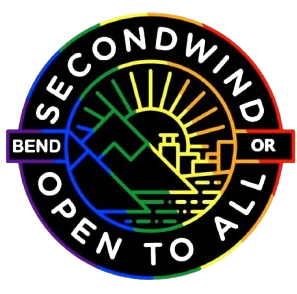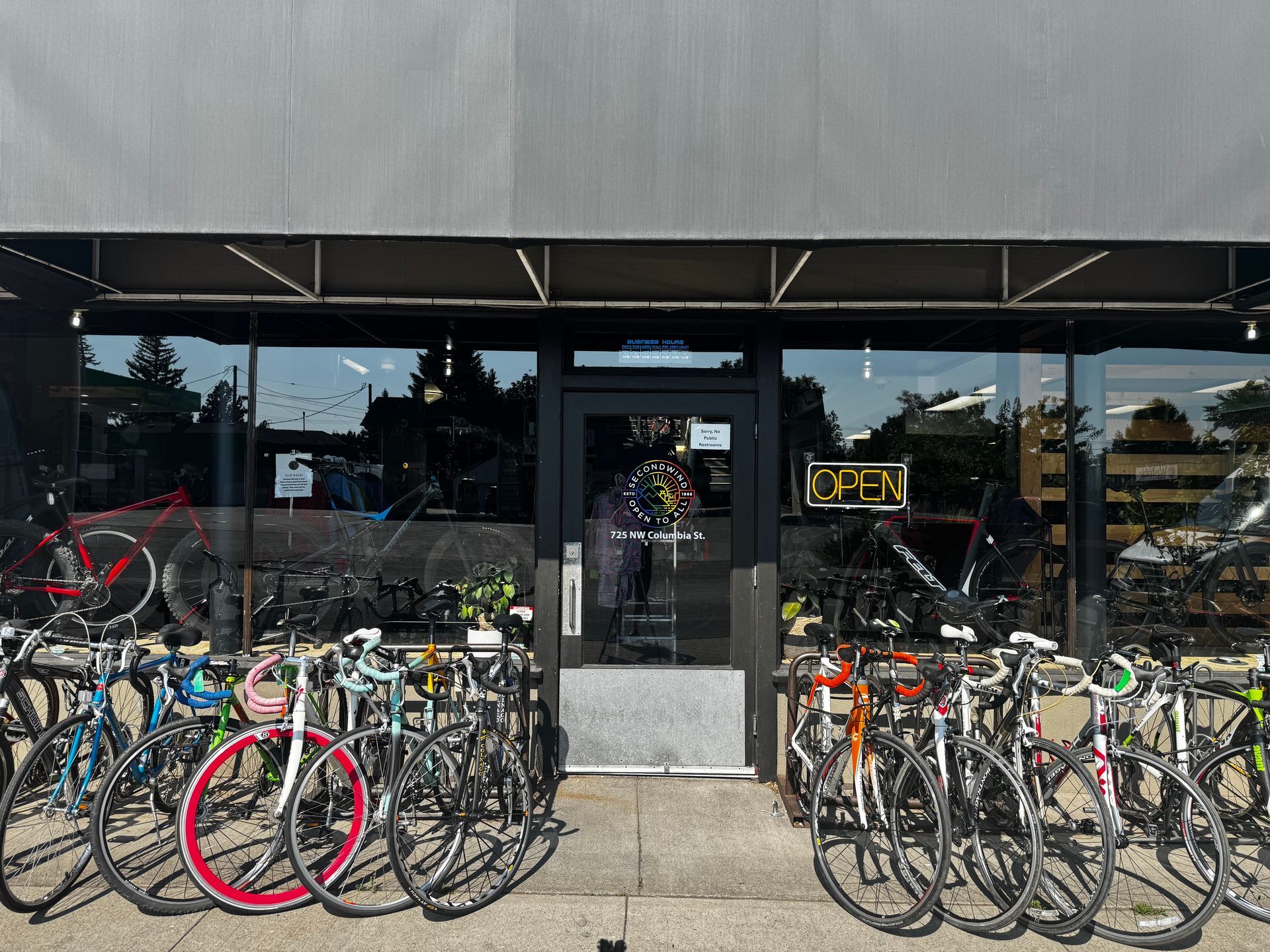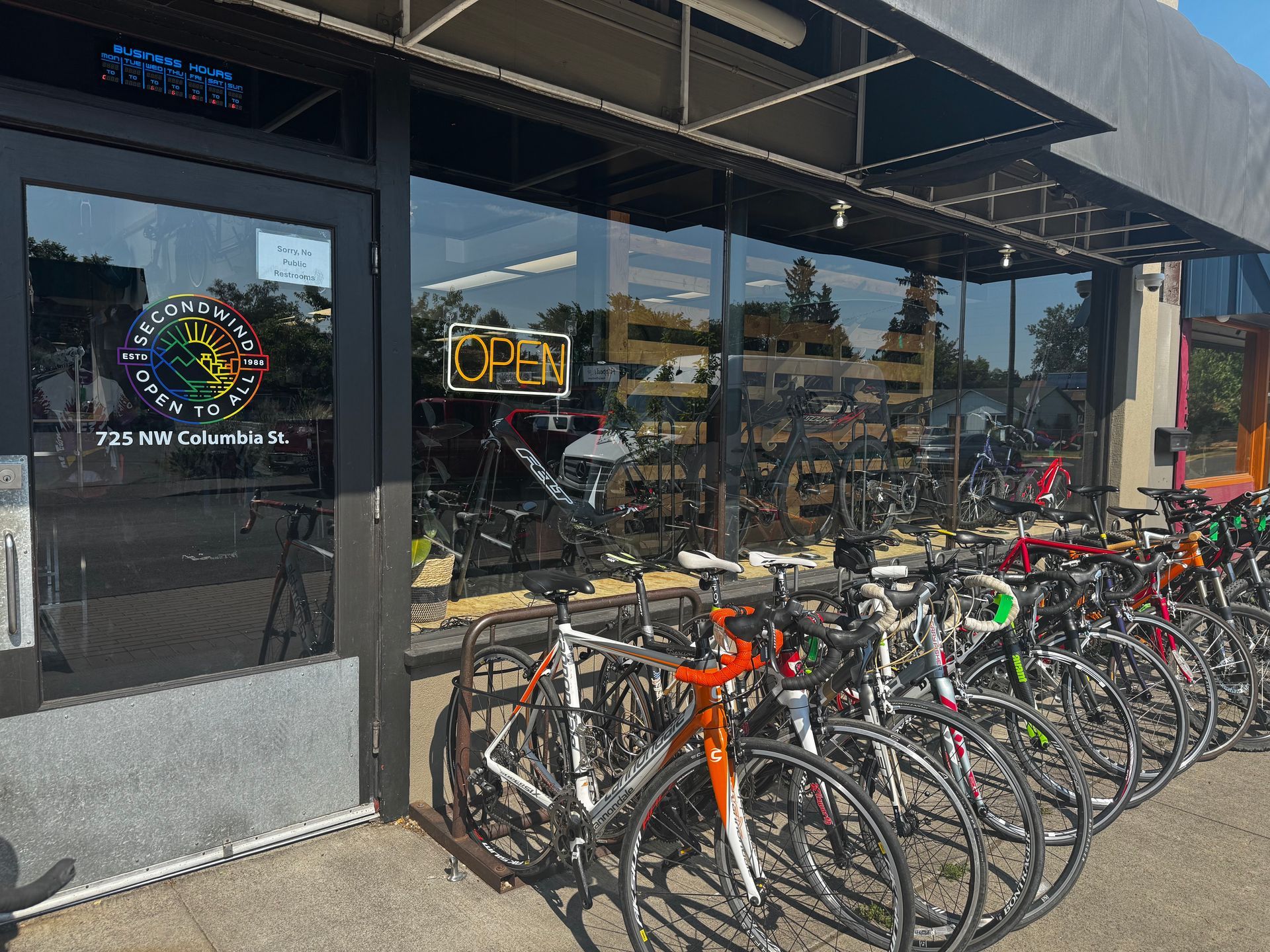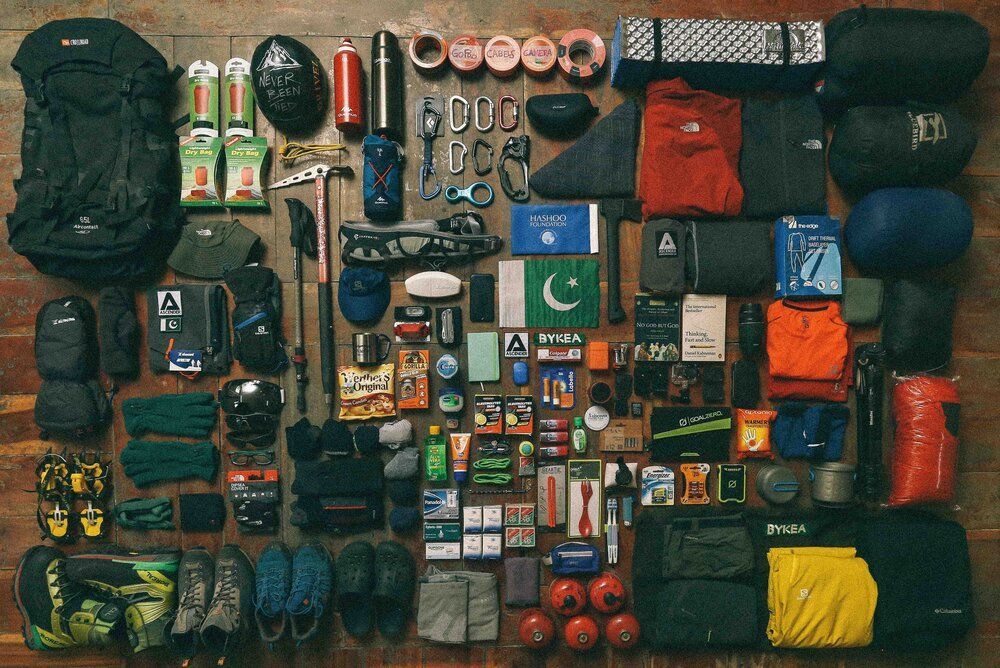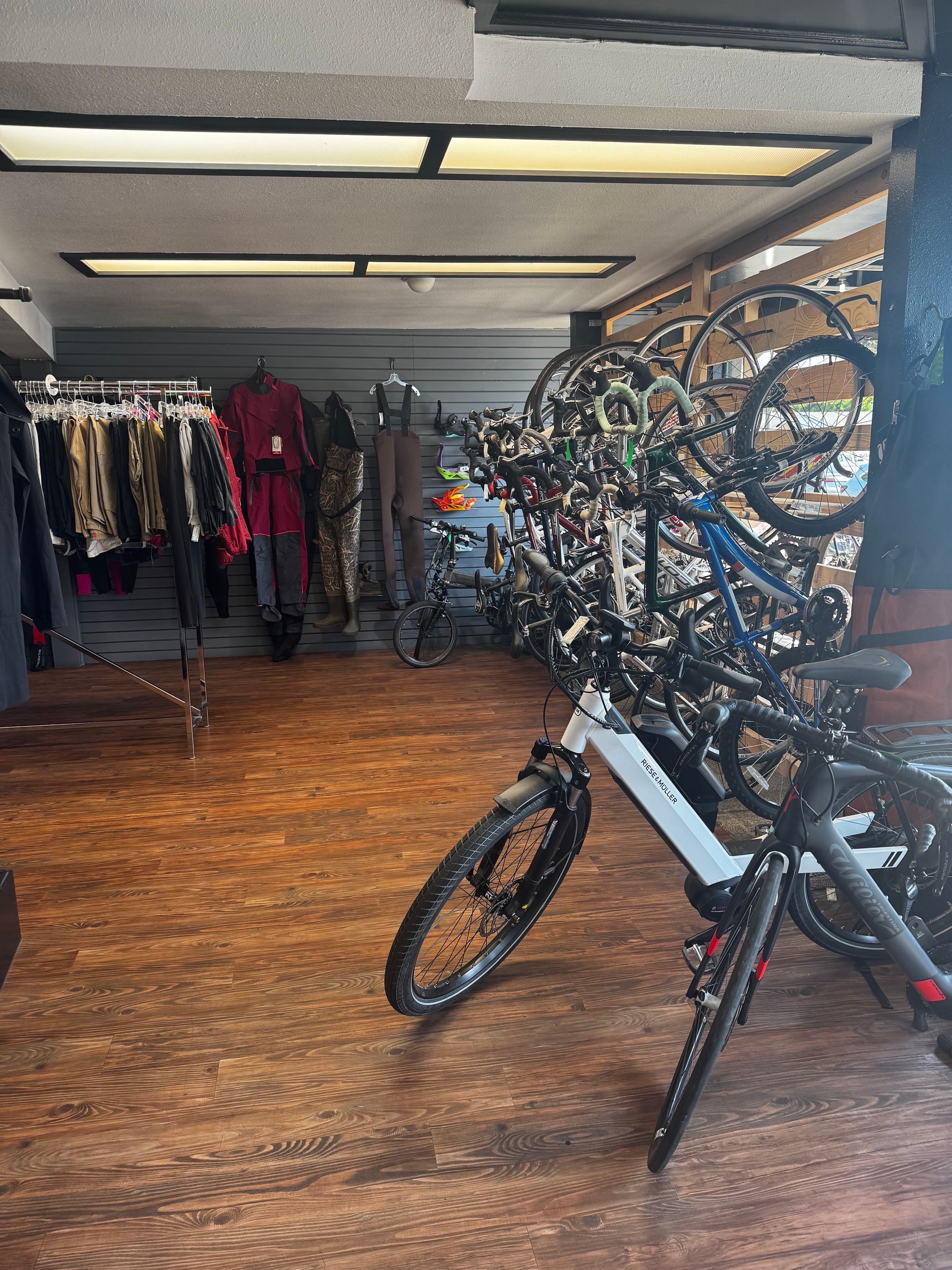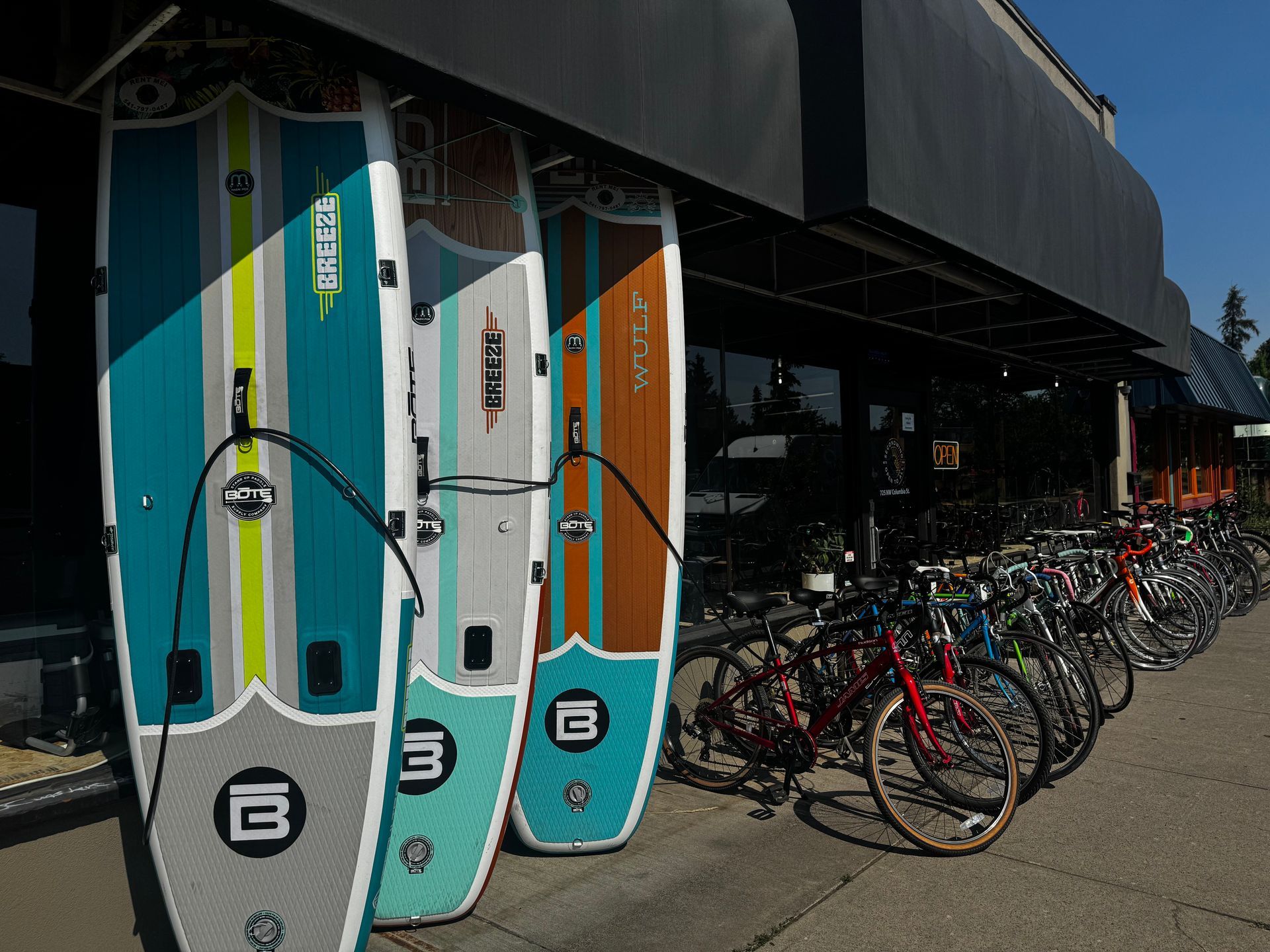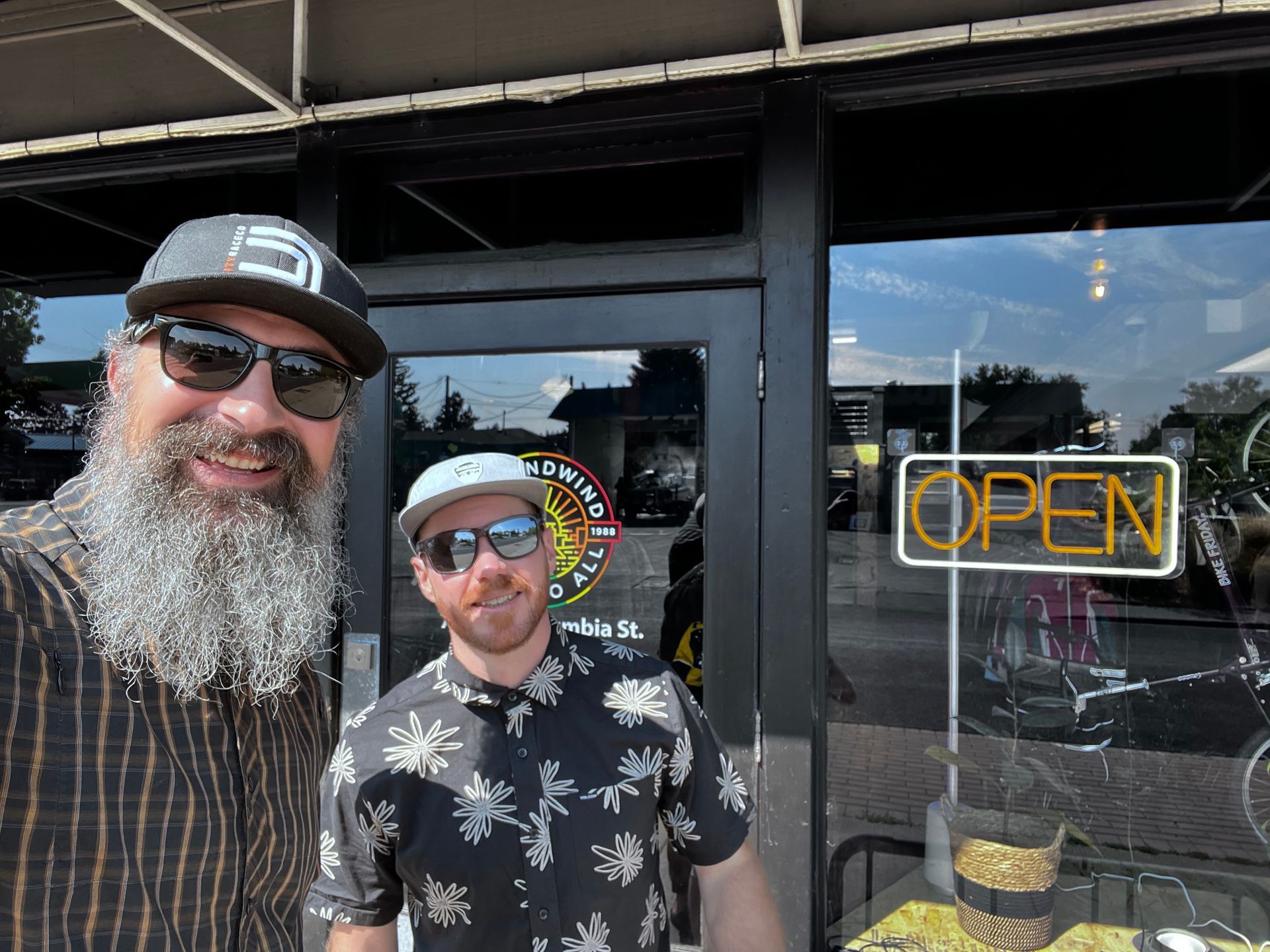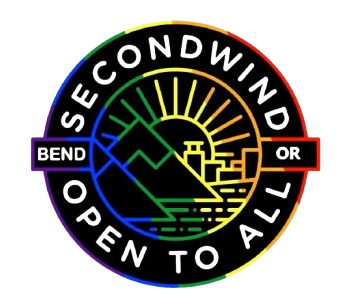What to Look for in a Used Mountain Bike
Shop Smarter, Ride Sooner: Your Guide to Buying a Used Mountain Bike
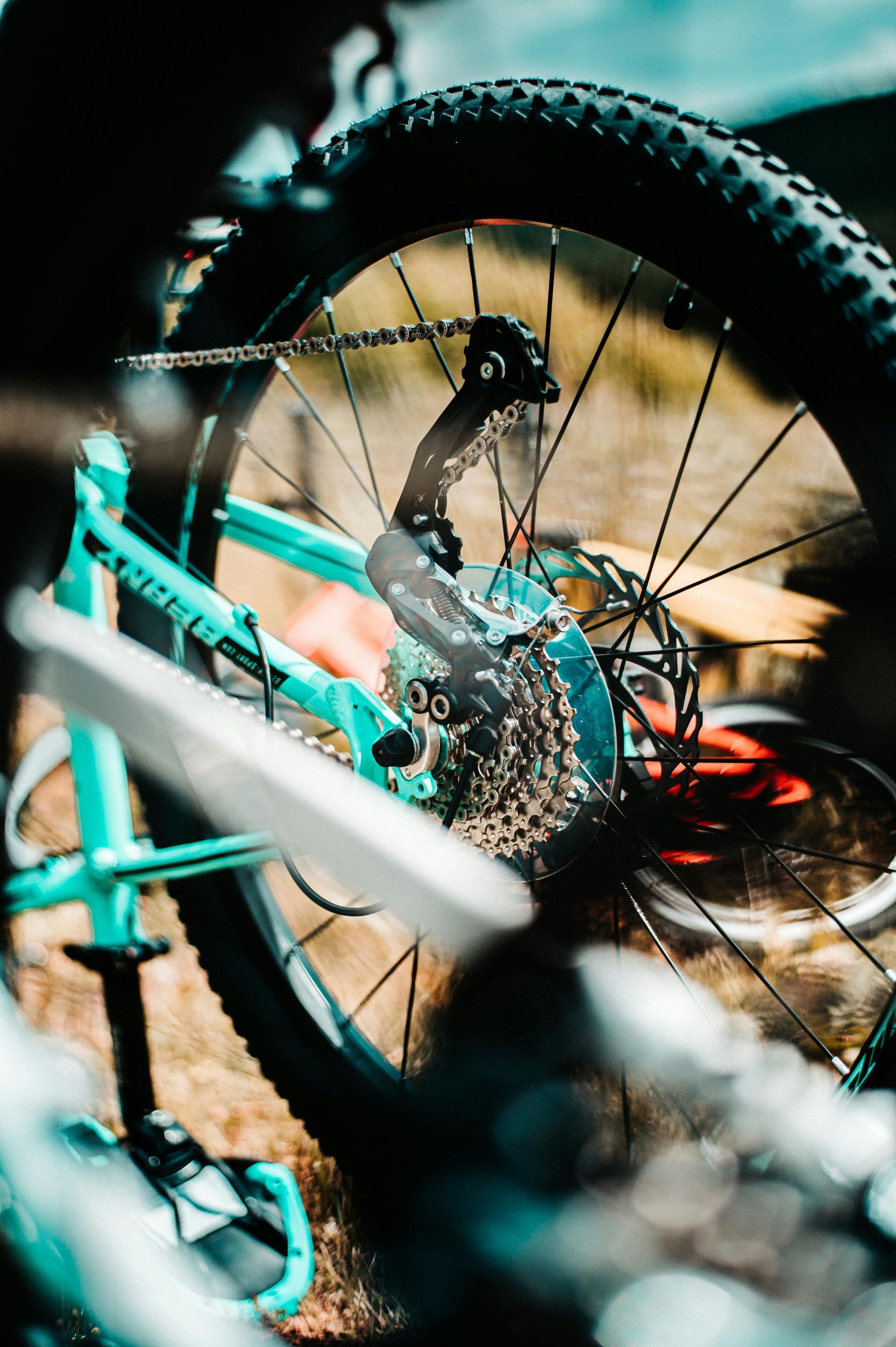
Mountain biking in Central Oregon offers world-class terrain—from the smooth, flowing trails at Phil’s to technical descents in the Cascades. But whether you’re a beginner or a seasoned rider, getting started with the right bike can be expensive.
The good news is that buying used is one of the smartest and most affordable ways to hit the trails without sacrificing performance. At Second Wind Sports Bend, we specialize in lightly used, high-quality mountain bikes that are fully inspected, trail-ready, and priced well below new retail models.
This guide walks you through exactly what to look for when buying a used mountain bike—so you can ride confidently and get the best value for your money.
Why Buy a Used Mountain Bike?
Investing in a pre-owned bike offers multiple advantages, especially for riders in a trail-heavy town like Bend.
Cost Savings
Used bikes often cost 30 to 60 percent less than their original retail price, which means you can afford higher-end models and components on a lower budget.
More Performance for the Price
A well-maintained used bike often comes with upgraded parts or higher-tier builds than what you’d get for the same price new.
Sustainability
Purchasing secondhand keeps gear in use and out of landfills, supporting a more circular and environmentally responsible approach to outdoor recreation.
Local Knowledge and Support
Buying from a local shop like Second Wind means you're getting insight from people who ride the same trails you do—and who can match you with a bike that fits both your needs and the terrain.
What to Inspect Before You Buy a Used Mountain Bike
Before you commit to any used bike purchase, whether from a private party or a shop, use this 10-point checklist to evaluate its condition, fit, and value.
1. Frame Integrity
Start with the frame. This is the foundation of the bike and one of the most expensive parts to replace.
Inspect the entire frame for cracks, dents, or deep gouges, especially around welds and high-stress areas such as the bottom bracket, head tube, and seat stays.
For carbon frames, check carefully for soft spots, delamination, or spider web cracking in the clear coat.
Light cosmetic scratches are normal and harmless. Structural damage is not. When in doubt, skip it.
2. Suspension
If the bike has front or full suspension, inspect both fork and shock.
Compress the suspension. It should feel smooth and responsive—not sticky, overly soft, or noisy.
Check for oil around the seals. Leaks indicate the need for service.
Ask when the suspension was last serviced. Annual maintenance is recommended for regular riders.
We can assist with suspension inspections and service recommendations during your visit.
3. Wheels and Rims
Spin both wheels and examine them for:
Lateral wobble (wheel is out of true)
Flat spots or dents in the rim
Broken, loose, or uneven spokes
Proper engagement and smooth spinning of hubs
A bent rim or damaged hub may require replacement, which can significantly increase the total cost of the bike.
4. Drivetrain
The drivetrain includes the chain, cassette, chainrings, derailleur, and shifters. These components wear over time and can be costly to replace.
Check that the chain moves smoothly through all gears.
Inspect teeth on the cassette and chainrings for signs of shark-fin wear.
Listen for squeaking, grinding, or skipping during a test ride.
We provide in-store drivetrain assessments and can tune or replace components if needed.
5. Brakes
Test the brakes thoroughly—reliable stopping power is critical.
Pull the levers firmly. They should feel responsive and not spongy.
Inspect brake pads for remaining life. Look for signs of uneven wear or contamination.
Examine rotors for grooves, warping, or rust.
For hydraulic brakes, check for leaks at the lever and caliper.
If the bike has cable-actuated brakes, ensure the cables are not frayed or sticky.
6. Tires
Used tires can still be perfectly functional, but they do wear down over time.
- Check the tread depth. Knobby tires should still have visible traction.
- Look for cuts, embedded debris, sidewall cracking, or dry rot.
- Make sure the tire beads are fully seated on the rims.
Tires are easy to replace but should still be factored into your budget if worn.
7. Bearings and Bottom Bracket
Test the bike's structural movement points.
Wiggle the wheels, cranks, and headset. Any looseness could mean worn bearings.
Pedal the bike and listen for creaks, pops, or grinding noises.
Check the bottom bracket area for movement or noise under pressure.
Worn bearings may require replacement but are fixable with the right tools and expertise
8. Cockpit and Controls
Evaluate the rider contact points and controls for safety and comfort.
- Inspect handlebars, stem, seatpost, and saddle for cracks or wear.
- Ensure the grips are secure and intact.
- Test the dropper post (if present) for smooth travel and return.
- Adjust the saddle to your height and check the clamp for proper tension.
A worn saddle or grip is easy to replace, but damaged controls could indicate larger issues.
9. Brand and Model Reputation
Research the make and model of the bike before buying. Consider:
The original retail price and how it compares to current used listings
The intended use of the bike (cross-country, trail, enduro, downhill)
Any common issues or recalls related to that model or component group
Not sure where to start? Our staff is happy to walk you through options and help you compare features.
10. Fit and Frame Size
The most important factor is fit. A high-quality bike is worthless if it doesn't suit your body.
Check the frame size and geometry relative to your height and leg length.
Take a short ride if possible to evaluate handling, reach, and comfort.
If you're between sizes, ask about adjustable stems, seatposts, or bars to dial in fit.
Not sure what size you need? Use our Bike Sizing Guide – REI, or better yet, visit us in-store for personalized help.
Why Shop for Used Bikes at Second Wind Sports Bend?
We take the guesswork out of buying secondhand. Every used bike on our floor has been inspected, cleaned, and tested by knowledgeable staff who ride regularly.
Inventory includes brands like Trek, Specialized, Giant, Cannondale, and Santa Cruz
All bikes undergo safety checks before they are priced for sale
We offer tune-up and repair services in-house
Our team is familiar with the local trails and can help match you to the right style of bike
New inventory is added weekly, and pricing is always fair
Looking to sell or upgrade? You can consign your old bike here.
Frequently Asked Questions
Is it safe to buy a used mountain bike?
Yes. Especially when purchased from a reputable shop. We screen every bike for safety and performance before it hits the floor.
Can I trade in or consign my old bike?
Absolutely. We accept gently used bikes on consignment and can help you turn your old ride into store credit or cash.
What is the average price range for your used bikes?
Most bikes in our shop range from $400 to $1,500 depending on brand, build, and condition. That’s often half the cost of a new model with similar specs.
Ready to Ride in Bend? Let’s Get You Rolling
Buying a used mountain bike should be exciting—not overwhelming. At Second Wind Sports Bend, our goal is to make your buying experience simple, affordable, and personalized to the type of riding you want to do.
Stop by our shop at 725 NW Columbia Street in Bend, Oregon, or call (541) 797-0487 to ask about our current inventory.
We’ll help you save money, reduce waste, and find the right bike for your trail goals.
